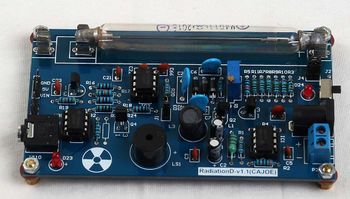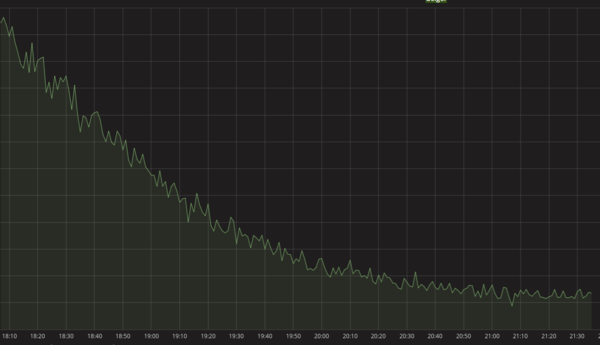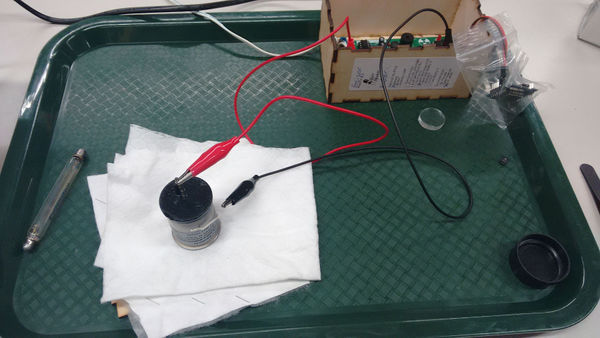Geigercounter
| Project Geiger counter | |
|---|---|

| |
| A geiger counter for the space | |
| Status | Completed |
| Contact | gori, thomas |
| Last Update | 2024-01-20 |
Where is it?
It lives above a ceiling panel in the workshop, just to the right of the door as you enter from the main space. Please note: the clicker has been permanently disabled.
Software
The software is available as a repository on github. The ESP8266 code is in geiger_esp.
The way the ESP8266 version of the software works, is by means of a single pulse counter. This counter is incremented for every tick coming from the Geiger tube.
Every second we keep track how much the counter has incremented compared to the previous second. This value is stored in a circular buffer of 60 entries, one for each second inside of a minute.
The 'cpm' value (counts per minute) is then simply the sum of all entries in the circular buffer! So we can calculate the cpm at any time, without rounding error, it's always the number of measured ticks in the previous 60 seconds.
The software uses the following libraries:
- WiFiClient for general WiFi
- WifiManager to make it easy to setup the WiFi (presents a captive portal to select a network and enter the passphrase)
- PubSubClient to publish measurements to MQTT
Measurements are published to topic 'revspace/sensors/geiger' on mosquitto.space.revspace.nl (also available on revspace.nl)
A mechanism is built into the software to keep the network connection stable:
- an MQTT 'last will' is registered, so if the sensor goes offline, the published value changes to 'offline'
- we keep an eye on the WiFi status; if it is no longer 'connected', the sensor is rebooted
- the built-in WiFi portal is configured with a timeout, so if the space power goes down and the WiFi network is not available (yet), the sensor will not hang waiting until it is configured.
Radon
In order to try and get our space geiger to display something more interesting than just random variations of natural background, it was put to use measuring the natural decay of radon progeny floating about in the basement of our SectorV location. A piece of filter paper was draped over the opening of our shopvac, and left to suck up airborne particulates in our server room, which of course happens to be the room with the least amount of ventilation. I let it do its thing for about five minutes or so.
Radon daughters are partly alpha emitters, so the space geiger was retrofitted with a different tube capable of detecting them. The stock tube (a chinese M4011) does not sport a mica window, but I have a mullard zp1430 that does. After turning off the vacuum cleaner, I promptly walked the filter back to the hackerspace and plonked the tube on top of it, with the mica window pressed right up against the paper surface.
See the graph below for a nice exponential decay curve of the filtered radon progeny. It surprised me how little time it took to collect enough radioactive particles for a decent curve to reveal itself. To give you an idea, the peak reading represents a particle count that is roughly 25 times above the normal background rate. I've also included a picture showcasing our "highly advanced" setup.
Pitch in for a geiger counter:
| Naam/Nick | Aantal euro's | Betalingsmethode |
|---|---|---|
| gori | 5 | |
| Walter | 5 | revbank (Betaald) |
| Jos | 5 | revbank (Betaald) |
| thomas | 5 | revbank (Betaald) |
| Peetz0r | 5 | revbank (Betaald) |
| merethan | 5 | revbank (Betaald) |
| pepman | 5 | revbank (Betaald) |
| bertrik | Wemos D1 mini | natura |
DONE! thank you all.

